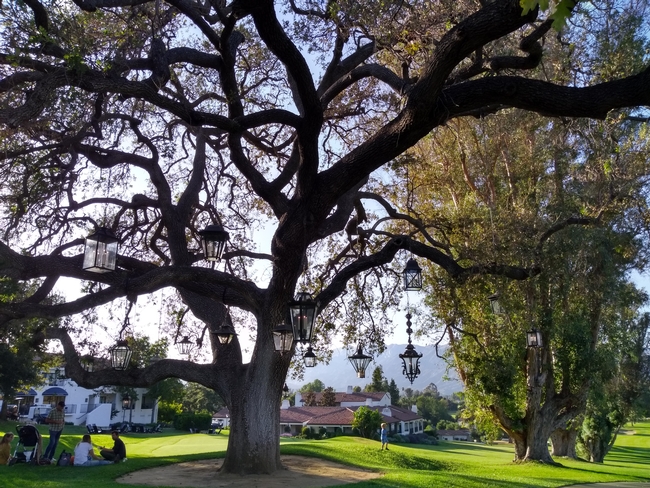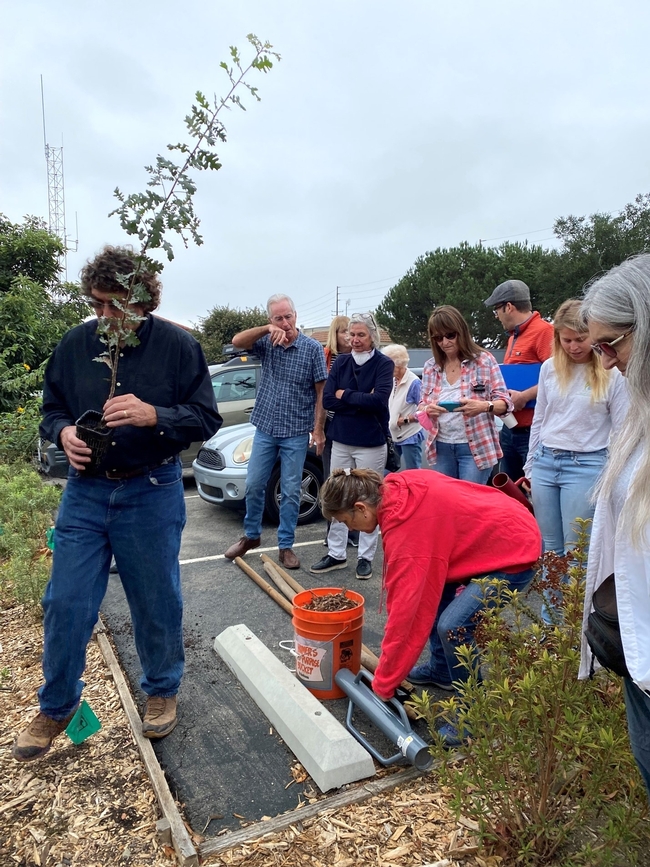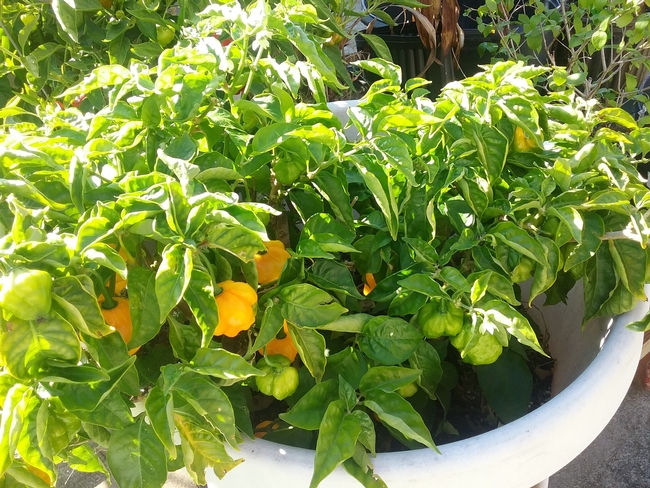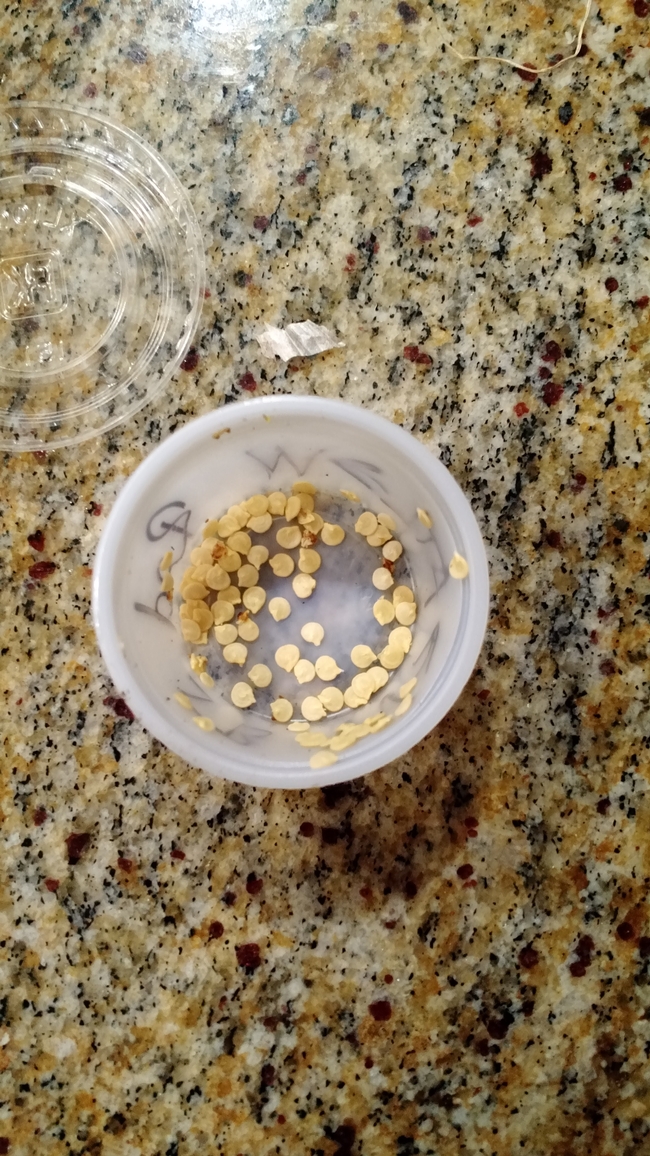UC Blogs
Webinars explore role of trees in climate change resilience, May 14-16
A free webinar series titled “Trees to the Rescue: Solutions for Climate Change” will be held on May 14-16, from 4 p.m. to 5:30 p.m. each day. The webinars are sponsored by the University of California Thelma Hansen Fund.
“The webinars aim to increase our understanding of the role of trees in mitigating and adapting to climate change, how to plant the right trees and keep them healthy in urban environments, and the challenges of increasing the number of trees at the local level,” said Annemiek Schilder, director of Hansen Agricultural Research and Extension Center, who is organizing the series. Hansen REC is operated by UC Agriculture and Natural Resources.
Participants will discuss some of the challenges and pitfalls of reforestation, urban greening and tree equity. They will also provide diverse perspectives on tree planting and maintenance efforts and policy at the local level.
“Anyone interested in learning about the importance of trees in urban environments and climate resilience, as well as tree retention in the landscape should join us,” she said.
The agenda for each 90-minute webinar is listed below. To register, visit https://bit.ly/HansenTreesWebinar.
Tuesday, May 14: Trees as a Tool for Climate Change Mitigation and Resilience
4 p.m. Welcome—Annemiek Schilder, Director of Hansen Agricultural Research and Extension Center
4:05 p.m. Opening Remarks—Matt LaVere, Ventura County Supervisor District 1
4:10 p.m. Improving Outcomes of Tree Growing and Forest Restoration Efforts—Karen Holl, Professor of Environmental Studies, UC Santa Cruz
4:50 p.m. Climate Resilience through Urban Greening—Edith de Guzman, UC Cooperative Extension Specialist, Water Equity and Adaptation Policy, UCLA
5:30 p.m. Closing—Annemiek Schilder
Wednesday, May 15: Optimizing Tree Survival in a Changing Climate
4 p.m. Welcome—Emma Volk, Production Horticulture Advisor, UCCE Ventura and Santa Barbara counties
4:05 p.m. Cooling Urban Heat Islands with Climate-Resilient Trees—Janet Hartin, Environmental Horticulture Advisor, UCCE Los Angeles and San Bernardino counties
4:30 p.m. Keeping Trees Healthy from Sapling to Maturity—James Downer, Environmental Horticulture and Plant Pathology Advisor Emeritus, UCCE Ventura County
5:05 p.m. Dealing with the Inevitable Threat of Exotic and Invasive Pests—John Kabashima, Environmental Horticulture Advisor Emeritus, UCCE Orange County
5:30 p.m. Closing—Emma Volk
Thursday, May 16: Tree Advocacy and Planning at the Local Level
4 p.m. Welcome—Julie Clark, Natural Resources Community Education Specialist, UCCE Ventura County
4:05 p.m. Native Tree Restoration with Partners and the Public—Joey Algiers, Restoration Ecologist, Santa Monica Mountains National Recreation Area
4:30 p.m. Panel Discussion (Joey Algiers, moderator):
- Joey Algiers, Santa Monica Mountains National Recreation Area
- Mireille Vargas, County of Ventura Sustainability Division
- Mikaela Randolph, Green Schoolyards America
- Jan Scow, Registered Consulting Arborist, Ojai Valley
- Max Young, Ventura Regional Fire Safe Council
5:30 p.m. Closing—Julie Clark
Gomphrena
Gomphrena is a super fun addition to the garden. It is in the Amaranthaceae family and is commonly know as globe amaranth. It comes in pink, purple, orange, red and white. It is native to Central and South America. It likes well-drained soil, and does best in full sun, where once established is a drought tolerant plant and deer resistant. It is a prolific bloomer and attractive to bees, butterflies and hummingbirds and will bloom from summer well into fall. It is considered an annual, but I have had mine in pots for years and grow three different varieties. It's flowers resemble a clover, but with dried bracts in the various colors. It does great as a cut flower or you can use them in dried arrangements. The first one I got was from Annie's Annuals, the 'Fireworks' variety is a bright purple airy and grows 2' x 3'. I fell in love with it's beauty and started growing more colors. I have used this a lot in my floral arrangements and find I love the red one the best!

photos by Heather Hamilton
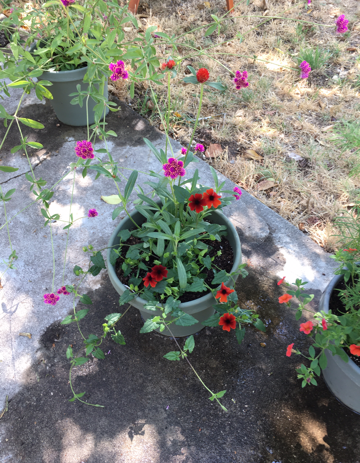
IMG 5341
The Day That Barbie, Bugbie and Bugs Swept Briggs Hall
Think pink? Of course! Marielle Simone Hansel Friedman, a second-year doctoral student in the lab of urban landscape entomologist Emily...

Marielle Hansel Friedman of the Emily Meineke lab talks about scorpions to visitors at Briggs Hall during the UC Davis Picnic Day. In back is Em Jochim of the Jason Bond lab. (Photo by Kathy Keatley Garvey)
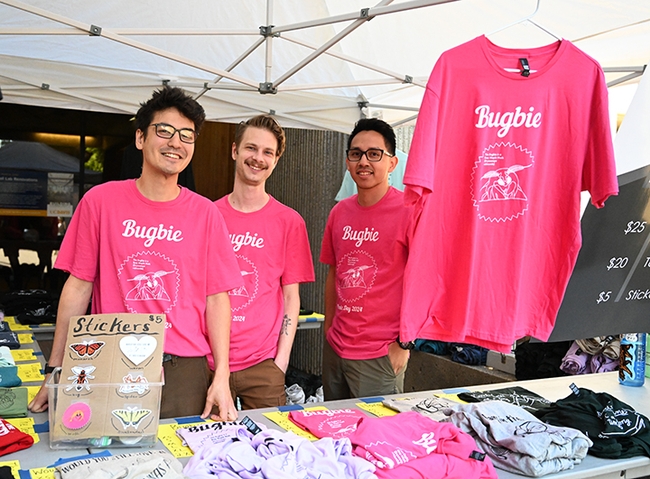
In the pink! Staffing the Entomology Graduate Student Association booth are (from left) Marshall Nakatani, Curtis Carlson and Richard Martinez. The T-shirts were among the top three best sellers of the day. (Photo by Kathy Keatley Garvey)
California Honey Festival Is the Place to 'Bee'
Show me the honey? Show me the California Honey Festival. The annual event, which emphasizes the importance of bees, and promotes honey and honey...
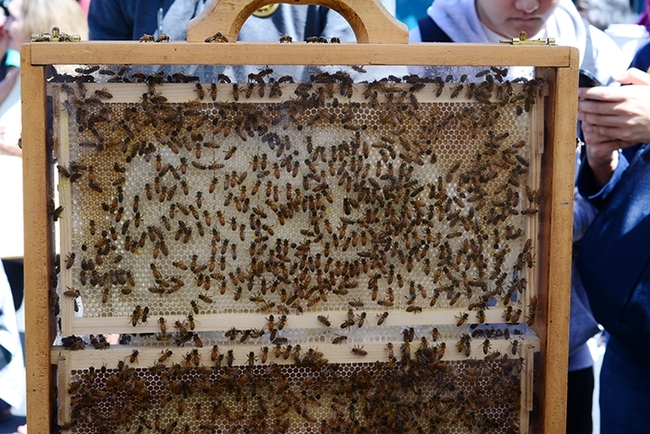
Bee observation hives attract attention at the annual California Honey Festival. Visitors delight in pointing out the queen bee and checking out the workers and drones. (Photo by Kathy Keatley Garvey)

"Queen bee" Amina Harris, retired director of the UC Davis Honey and Pollination Center that she founded in 2012, also co-founded the California Honey Festival in 2017. In this archived photo from last year, she offers attendees a taste of honey. (Photo by Kathy Keatley Garvey)
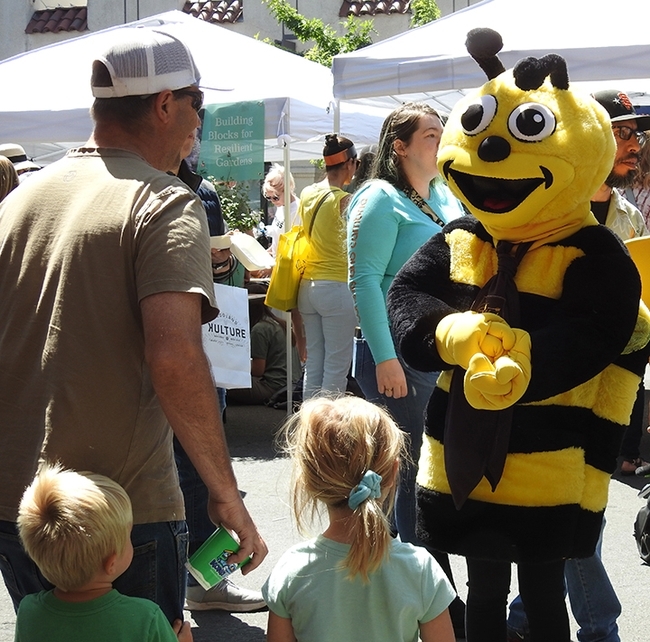
At the 2023 California Honey Festival, Wendy Mather, co-program manager of the California Master Beekeeper Program, delighted in greeting the crowd and posing for photos. (Photo by Kathy Keatley Garvey)
Scotch Bonnet Jean
When I first married into my husband's family, I was new to the Capsicum chinense family, but I thought I knew to what Scotch Bonnet was. A “Yank,” in a family ofyardies. For years I would buy Scotch Bonnet plants, and for years, brother-in-law would say “no.”
I did not know of “landraces,” that there were red and yellow Scotch bonnets, I did not know there were named cultivars. Since then, I have learned C. Capsicum can be a bit promiscuous, and as my father-in-law might say, may do some “mingling.”
One year, my mother-in-law harvested and gave me a pepper. We talked about its shape, its size, its color, not just the heat but the flavor, and especially the fragrance.
That year I scraped out the seeds, let the seeds dry, and saved them for the next season. I sprouted it, potted it up, and grew it on. I grow a lot of peppers, and understood it might have “mingled,” but I was excited to see the next generation.
What a beautiful plant! What amazing peppers! I over-wintered that plant through freezes, floods, triple digits, and wildfires. Some years I was not sure it would come back. Especially last year.
But it did!Phew! That was close. But I was not taking chances. I saved seed and grew another generation.
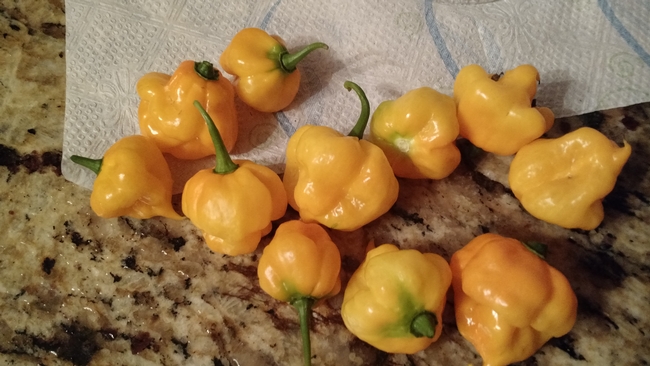
Scotch Bonnet OG 2


